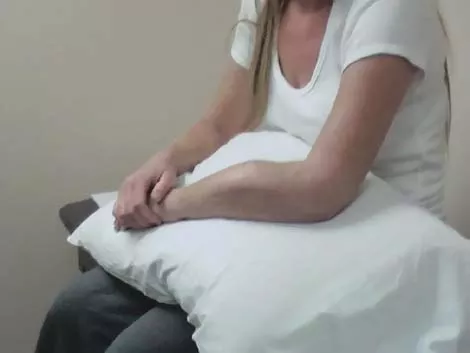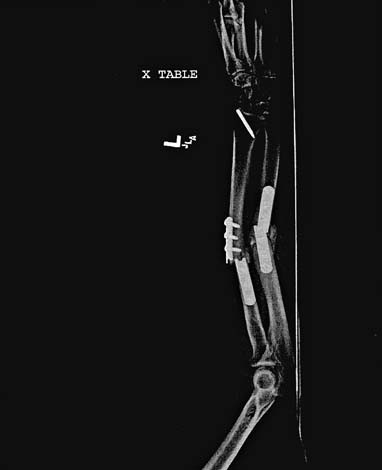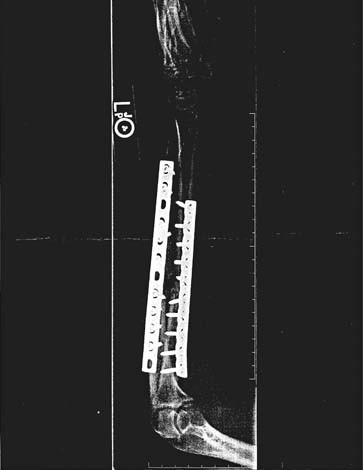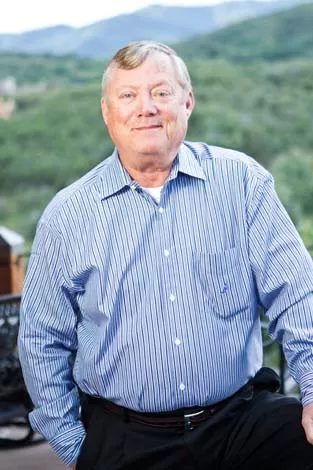Page 3 of 3
“If DOPL wanted to determine whether a physician was negligent and breached the standard of care, they have to go typically to a local physician for help,” Thronson says, adding that in a close-knit medical community, the doctor may be an acquaintance of one being investigated, or perhaps refer patients to that doctor. “It’s understandable that a physician would be reluctant to criticize a fellow physician.”
A look at documents obtained by City Weekly from the Attorney General’s Office shows how DOPL grappled with this exact problem in the Eyring case. A signed memorandum by Assistant Attorney General Blaine Ferguson stated that investigating Eyring was difficult since it required hiring an outside consultant.
This is partly because the contract couldn’t be advertised for public bid (the usual procedure with state contracts) since doing so could jeopardize the case, ostensibly because it would alert Eyring to the investigation and because there could be conflicts of interest in Utah’s small, colorectal-surgeon community. Ultimately, the expert, Terry Hicks, had to be hired from outside of Utah. Hicks was paid $20,000 to examine 16 separate complaints against Eyring, according to a billing document from the Utah Attorney General’s Office.
One complaint even referenced a 2007 case, where a patient of Eyring’s (referred to as “X”) died when Eyring wrongly—in the expert witness’ opinion—diagnosed the patient with pneumonia after surgery instead of the sepsis that ultimately took his life. The family of the deceased patient would not comment for this story since it is still in private arbitration with Eyring and his attorneys.
Patient X, according to DOPL’s petition, had troubles during surgery when X suffered a hole in his colon during surgery by Eyring. The complication required repair by another surgeon. Eyring’s attorneys responded to the complaint, highlighting Eyring’s efficiency in calling for a quick blood transfusion and requesting a vascular surgeon to repair the hole. “Dr. Eyring asserts his handling of this situation was an excellent response to the surgical complication.”
Yet, it was the postoperative care that concerned the state’s expert witness. In his report, he said that X’s wife was told by Eyring that her husband had pneumonia, when, in fact, other physicians assigned to monitor X’s recovery from surgery noted X was suffering “septic shock.”
Steinagel says the problem with the Eyring case was that there were internal delays with the investigation and that new complaints were not being filed with DOPL (hinting perhaps that the doctor’s standard of care had improved in the intervening years). This led to the decision Steinagel stands by: to simply reprimand Eyring and order more professional training.
“Still, it’s a case I grapple with,” he says. Internally, Steinagel believes his department can streamline cases and make more timely responses. He’s also approaching investigations differently by hiring investigators who are former professionals in the field they investigate as opposed to having a background in law enforcement. “We need not only good investigative experience, but we’re also seeking investigators with medical experience to pick up on these standard-of-care issues,” Steinagel says.
Some in the medical-malpractice legal field want broader changes to make the public more aware of licensing complaints, even if that’s a harder pill than the Utah Legislature and local medical professionals are willing to swallow.
One possible reform might be to allow hospitals to share their discipline files with DOPL so long as the information is not discoverable by attorneys. Generally, hospitals don’t share their discipline files with DOPL, especially if it’s a standard-of-care issue, since a hospital could face liability by admitting it had tried, perhaps unsuccessfully, to police its doctors in-house.
“At a minimum, [hospitals should] give it to DOPL, so DOPL can decide if they need to change your privileges,” Lance says.
Thronson agrees, arguing real reform can’t be left to courtroom battles.
“Obviously, lawyers are not in the best position to regulate the medical profession,” he says, pointing out that hospitals that maintain higher practice standards tend to report fewer injuries and thus reduce the costs of defensive medicine. “It’s got to be done by the medical association or by DOPL—even with their manpower limitations.”
Tough Break
Like many Utahns who feel they’ve suffered from medical malpractice, Tammie Hatton didn’t research her doctor until she felt something wasn’t right. In March 2009, Hatton was rushed to the Ashley Regional Medical Center in Vernal after suffering a broken arm from falling off a horse. In the emergency room, Hatton and her husband met Ghansyam Massand, the on-call doctor. The couple recalls Massand saying he would reset the arm by placing a metal plate next to the bone, and in three months’ time, when the cast was removed, her arm would be healed.

Tammie’s husband, Steve, still recalls walking into Massand’s office the morning the cast came off and seeing an X-ray of another patient’s broken bone on his desk. Steve told Massand that the X-ray wasn’t his wife’s. “[Massand] said, ‘No, that’s another little boy out there [whose] cast came apart this morning. That’s two this morning—this isn’t a good day for me.’ I just looked at him and said, ‘For you?” says Steve Hatton.
Massand’s lawyer, David Epperson, writes in a statement to City Weekly that his client denies any allegation of malpractice and that the injury was the result of a hardware malfunction, which he says is a common issue with these types of metal plates. The case is still in the discovery proceedings in the 8th District Court in Uintah County.

|

|

|
While Lance is suspicious of Massand moving his practice from state to state, his real concern is that this sort of case often falls through the cracks. If DOPL has trouble pursuing and disciplining standard-of-care cases with doctors, it doesn’t get any easier for lawyers to bring lawsuits against negligent doctors.
For attorneys like Thronson and Lance, a medical-malpractice case means clearing a lot of hurdles. According to Thronson, there are 29 statutory protections for physicians in Utah in the event of litigation, compared to zero for every other profession. These barriers make it hard for some attorneys to justify taking cases like Tammie Hatton’s or Toupta Boguena’s—cases that have strong claims but do not necessarily justify a protracted legal battle.
“I lost my shorts on [Boguena’s] case,” Lance says, referring to the amount he received in contingency fees compared to the number of hours he put into the case. “But it was a legitimate case, and it was the right thing to do,” he says, adding, “If we’re not policing doctors—and we know DOPL isn’t doing it—then, who is?”
Where Does One Look?
Between overworked state regulators and lawyers who can’t afford to take legitimate but time-intensive—and thus costly—malpractice cases, it may remain up to patients to protect themselves by finding out what they can about health-care providers.
Unfortunately, the inconsistent regulation can make researching a doctor difficult. A simple Internet search of a doctor’s name—even those with discipline records—often won’t reveal blemishes. When searching online for the name of Edward Eyring—the colorectal surgeon who was described by the state’s own expert witness as displaying a pattern of deception and negligence—a search yields sites that contain mostly glowing reviews of the doctor, such as Eyring being named “Patient’s Choice for 2008” by Vitals.com, or HealthGrades.com showing it “has found no sanction history for Dr. Eyring for the last 5 years.”
His own Website (JoeEyringMD.com) and others highlight Eyring’s community involvement, the fact that he is the chair of the Utah Colon Cancer Taskforce and that he is a past chair of the Utah Cancer Action Network. He even appears in videos, one of which has aired recently on a local TV station, urging viewers of appropriate age or risk to be screened for colon cancer.
Eyring’s medical practice receives a clean bill of health online. And this is not surprising, considering an allegation DOPL’s expert noted in his report: In 2008, a patient allegedly suffered injury from an elective operation she says Eyring urged her to undergo (in Eyring’s response to the DOPL complaint, he denies this and says he initially advised the patient against surgery). After surgery, she would end up having her surgical complications repaired by other physicians. When she picked up her medical records from Eyring, he “allegedly pushed [the patient] into an exam room,” and “informed her that she did not need to contact anyone and just have her insurance company contact him,” according to Hicks’ report. Hicks also wrote that the woman felt “Eyring was pressuring her for a dollar amount to settle this matter.” (Eyring’s attorneys say in their response to DOPL that their client denied pressuring the patient.)

When repeatedly asked to comment on this story, Edward Eyring—who now practices medicine using his middle name, as “Joe” Eyring—said through the attorneys who represented him in the DOPL proceedings that he couldn’t talk with City Weekly since he claims his DOPL stipulation order prohibits him from talking about the investigation (although, in reality, the order only prevents him from claiming the matters in his stipulation “are without factual basis”).
“I can say, however, that my license is clear, and I have nothing against [DOPL],” Eyring says. “And I have no restrictions now in the practice of medicine.”%uFFFD
Visit CityWeekly.net/doctors for a Utah physicians DOPL discipline database.